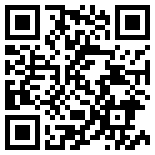首页 > 评测 > FireBeetle Board-ESP32——HttpServer&Touch IO
FireBeetle Board-ESP32——HttpServer&Touch IO
- [导读]
- 本文展示了如何使用Arduino的IDE在Firebeetle ESP32中构建一个网络服务器以及使用touchIO来配置一个触摸按键。
通常情况下会想要通过访问网页来实现对某些设备的操作和控制,在arm平台上建立httpserver,使用lwip协议栈的话开启SSI和CGI就可以比较容易的实现上述想法。那么在arduino中,同样可以创建网络服务器,一下举个例子
需要的库就是FireBeetle Board-ESP32提供的
if (c == '\n') { // if the byte is a newline character
// if the current line is blank, you got two newline characters in a row.
// that's the end of the client HTTP request, so send a response:
if (currentLine.length() == 0) {
// HTTP headers always start with a response code (e.g. HTTP/1.1 200 OK)
// and a content-type so the client knows what's coming, then a blank line:
client.println("HTTP/1.1 200 OK");
client.println("Content-type:text/html");
client.println();
// the content of the HTTP response follows the header:
client.print("
LED Control
");
client.print("Turn On The LED
");
client.print("Turn Off The LED
");
// The HTTP response ends with another blank line:
client.println();
// break out of the while loop:
break;
} else { // if you got a newline, then clear currentLine:
currentLine = "";
}
} else if (c != '\r') { // if you got anything else but a carriage return character,
currentLine += c; // add it to the end of the currentLine
}
以上实现了发送http头和内容,假如要控制一个led,还需要发送点亮或者关闭的请求,然后解析后执行IO动作。
以下就是对应的IO操作,2端口就是D9,连接到板载的LED.
// Check to see if the client request was "GET /H" or "GET /L":
if (currentLine.endsWith("GET /H")) {
digitalWrite(2, HIGH); // GET /H turns the LED on
}
if (currentLine.endsWith("GET /L")) {
digitalWrite(2, LOW); // GET /L turns the LED off
}
无线开启后搜索程序中制定的AP并连接,然后我们可以访问模块在路由器中获得的IP地址,调试程序在串口也会输出这些信息。

点击链接就可以操作模块上的LED了,这就是实现网页控制的基本原型。除此之外,还有值得一提的地方是FireBeetle Board-ESP32 提供了多达 10 个电容式传感器 GPIO,能够探测由手指或其他物品直接接触或 接近而产生的电容差异。这种低噪声特性和电路的高灵敏度设计适用于较小的触摸板,可以直接用于触摸开关。
接下来测试一下是否如实。
查找库文件,简单书写下面代码
//触摸IO测试
void setup() {
Serial.begin(115200);
delay(1000); // give me time to bring up serial monitor
Serial.println("FireBeetle Board-ESP32 Touch Test");
}
//10 个具有触摸传感器的IO,D0-D9,即T0-T9
void loop(){
//读取IO 状态
Serial.println(touchRead(T2)); // get value using T0->D9
delay(1000);
}
然后直接用手去触摸IO,通过串口监视器看到如下,在有手指触摸的时候会变为高电平

这样的功能可以的确可以尝试作为电容触摸按键了。后续准备还是回到C环境下了,不过不否定Arduino是很好用的
-
- 本文系21ic原创,未经许可禁止转载!
网友评论
- 联系人:巧克力娃娃
- 邮箱:board@21ic.com
- 我要投稿
-
欢迎入驻,开放投稿
-

人均百万?英伟达中国员工收入曝光! 2024-08-29
-

《黑神话:悟空》玩家硬盘升级攻略:提升游戏体验,畅享3A大作 2024-08-29
-

数睿数据参加《系统与软件工程 低代码开发平台通用技术要求》国家标准编制 2024-08-29
- NRF52810蓝牙数字耳机找人定制
预算:¥30005天前
- 125KW模块式PCS软硬件外包开发
预算:¥1100000015小时前
- 12V汽车启动电源项目BMS设计
预算:¥50000023小时前
- 数据可视化软件 开发
预算:¥5000023小时前
- PLC项目调试修改
预算:¥100001天前
- 起动电机控制器开发
预算:¥1100001天前
















